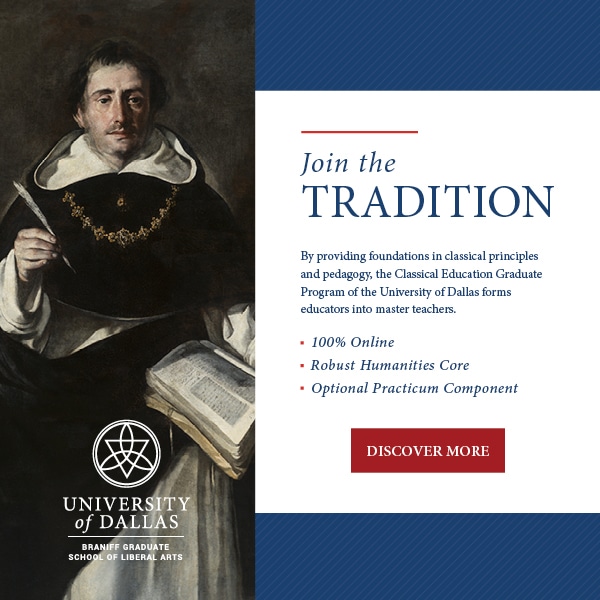The 5 Discourses of Jesus
How Jesus retells and fulfills the whole Old Testament in 5 sermons
In recent months, I have done some extensive study and teaching in the gospel of Matthew, a fascinating journey which produced a slew of articles, sermons, and posts (a couple of which are previously posted on the CiRCE blog here and here), mainly addressing the structure, types, and patterns in the gospel. Here I offer one more.
St. Matthew uses five of Christ’s discourses to structure and frame his gospel, completing what amounts to a retelling and fulfilling of the entire Old Testament.
The five discourses are large blocks of Jesus’ teaching found throughout Matthew’s gospel. Each one of them begins and ends in similar fashion. For example, the Sermon on the Mount (chapters 5-7) begins, “Seeing the crowds, he went up on the mountain, and when he sat down, his disciples came to him. And he opened his mouth and taught them, saying…” When the Sermon is over in 7:28-29, Jesus says, “And when he had finished these sayings, the crowds were astonished at his teaching, for he was teaching them as one who had authority, and not as their scribes.”
The second discourse, which is found in chapter 10, begins this way: “These twelve Jesus sent out, instructing them…” (10:5) and ends in 11:1 where Matthew says, “When Jesus had finished instructing his twelve disciples, he went on from there to teach and preach in their cities.” We find the same pattern used in the third discourse in chapter 13. Matthew opens it officially in 13:1-3 and ends officially in 13:53. The fourth discourse has a similar “official” opening in 18:1-3 and an “official” ending in 19:1. The fifth and final discourse begins in 23:1 and ends in 26:1, all following the same pattern. This pattern makes the discourses easily identifiable and, perhaps, serves a mnemonic function similar to Homer’s “rosy-fingered dawn.”
But, what is of particular interest to me is how these discourses are used by Matthew to retell the entirety of the Old Testament, demonstrating that Christ is the fulfillment of all that was promised therein.
1.The Sermon on the Mount (chapters 5-7)
The first discourse is the Sermon on the Mount, in chapters 5-7. In His baptism and temptation, Jesus has passed through the Jordan and finished His wilderness journey (echoing Exodus), now He ascends the mountain and declares the Law, calling His people to live in a righteousness that exceeds the righteousness of the Pharisees. Jesus is Moses on Mount Sinai; He is YHWH delivering His law to the people.
Now, it should be remembered that because Matthew is moving through the Old Testament, by the time we reach chapter 5, he has taken us through creation (1:1), Abraham (1:2), Isaac (1:2), Israel (1:2), Joseph (1:2-17), and the early part of Exodus (1:18-2:23). We now find ourselves at Mount Sinai, if you will, with the closing of the Sermon on the Mount (7:28) coinciding nicely with Deuteronomy 32:45 – “And when Moses has finished speaking all these words to all Israel…” So, in a sense, when we finish the Sermon on the Mount, Matthew has brought us to the end of both Exodus and the Pentateuch; the end of the Mosaic era.
2.Commissioning of the Twelve (chapter 10)
The second discourse, in chapter 10, moves into the period of conquest – the story of Joshua. Jesus commissions the twelve disciples to go into enemy country and cast out the enemy (demons, disease, and affliction). Numbers 13 also begins with the commission and naming of the twelve spies who are to go into enemy country and spy it out with the plan of casting out and conquering the enemy.
Leading up to this discourse, in Matthew 9:36, we read, “When he saw the crowds, he had compassion for them, because they were harassed and helpless, like sheep without a shepherd.” In Numbers 27, Moses commissions Joshua to lead Israel and in verses 15-18 we read: “Moses spoke to the Lord, saying, ‘Let the Lord, the God of the spirits of all flesh, appoint a man over the congregation who shall go out before them and come in before them, who shall lead them out and bring them in, that the congregation of the Lord may not be as sheep that have no shepherd.’ So the Lord said to Moses, ‘Take Joshua the son of Nun, a man in whom is the Spirit, and lay your hand on him.’”
In commissioning His disciples, Jesus anoints the new leaders of the congregation of Israel for a type of military operation. The disciples are sent into enemy territory (“sheep in the midst of wolves” – 10:16), expecting to be rejected by some (10:17-25), while those who do received them – like Rahab received the spies – will be rewarded (10:40-42). Jesus urges them to have no fear (10:26-33), echoing the words of Moses and Joshua when they spoke to Israel before their conquest of Canaan (Num. 14:9, 21:34; Deut. 1:21, 31:8; 8:1, 10:8).
It is also in this context of conquest that we find Jesus uttering those words which confuse many – “Do not think that I have come to bring peace to the earth. I have not come to bring peace, but a sword…” But, these words make sense on the edge of a holy war; a war not against the Canaanites but against Satan and his demons. He is not making peace with them or those who serve them. He is bringing them a sword.
3.Parables of the Kingdom (chapter 13)
In the third major discourse, found in chapter 13, Jesus delivers His parables of the Kingdom and Matthew’s gospel moves from the period of conquest into the Wisdom of Solomon. The word “wisdom” is only used 3 times in Matthew, with all three instances occurring in this section (11:19, 12:42, 13:54). Matthew 12:42 is particularly interesting: “The queen of the South (Sheba) will rise up at the judgment with this generation and condemn it, for she came from the ends of the earth to hear the wisdom of Solomon, and behold, something greater than Solomon is here.” Jesus begins His parables just a few verses later.
At the end of His parables, in 13:54, note the response of the people: “And when Jesus had finished these parables, he went away from there, and coming to his hometown he taught them in their synagogue, so that they were astonished, and said, ‘Where did this man get this wisdom and these mighty works?’”
4.Talking of the Church (chapter 18)
From chapters 14-18, there are series of events that distinguish the followers of Jesus from His enemies. He heals the sick, feeds the hungry, and confronts the Pharisees and scribes (chapters 14-15). Then he heals the sick, feeds the hungry, and confronts the Pharisees and Sadducees (chapters 15-16). Jesus then foretells of His death and resurrection (16:21-23). Significantly, we also see the Transfiguration of Jesus in chapter 17, which connects Jesus with Moses and Elijah, showing another transition: the reader is now with Elijah.
Then, again, Jesus foretells of His death and resurrection (17:22-23) and the fourth discourse is delivered, mirroring the divided kingdom stage of Old Testament history. Jesus instructs His disciples on how they are to live as the “church” – a word used only twice in Matthew, both in this section (16:18, 18:17) – or literally, “the called out ones.” Jesus establishes a community or remnant of faithful disciples that have been rejected from greater Israel, a new “sons of the prophets,” a separate community, like Elijah and Elisha led.
5.Olivet Discourse (chapters 23-25)
In the final discourse, Jesus takes on the role of Jeremiah and Ezekiel, a thunderous prophet. As Jeremiah, Jesus verbally attacks the priests and leaders (the scribes, Pharisees, and hypocrites) in chapter 23, uttering seven prophetic “woes” against them in the temple, just as Jeremiah did in his temple sermons (see Jeremiah 7 and 26). Like Jeremiah, Jesus laments over Jerusalem even as He condemns it (Matthew 23:37-39). Like Jeremiah, Jesus warns that the city will be left in desolation: “See, your house is left to you desolate” (Matthew 23:38) and “But if you will not obey these words, I swear by myself, declares the Lord, that this house shall become a desolation” (Jeremiah 22:5). And, finally, in Matthew 24:1-2, as Jesus leaves the temple, the glory of the Lord departs (Ezekiel 8-11).
Why This Matters
Beyond the obvious benefits that come to any Christian who grows in his understanding of Scripture, the months I have spent in St. Matthew’s Gospel have reminded me of the benefits of reading deeply and contemplatively, not only with Scripture, but with great literature. Paying attention to repetitions, literary devices, identifying parallels, and pursuing types and patterns yields tremendous reward. Making comparisons and connections brings greater clarity to all of our reading and guides us in the cultivation of wisdom and virtue in ourselves and our hearers.
Postscript: For those who would like to read more about the structure and patterns of the Gospels, I would highly recommend Peter Leithart’s book The Four: A Survey of the Gospels.

Brian Phillips
Dr. Brian Phillips serves as a pastor in Concord, NC, where he lives with his wife and their four children.











